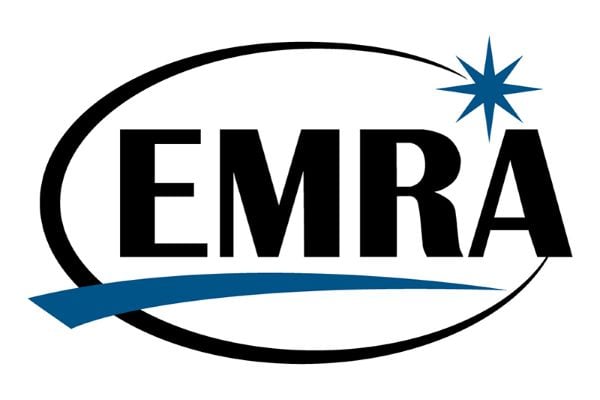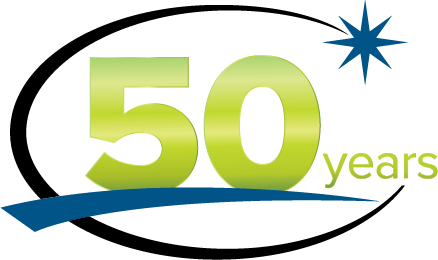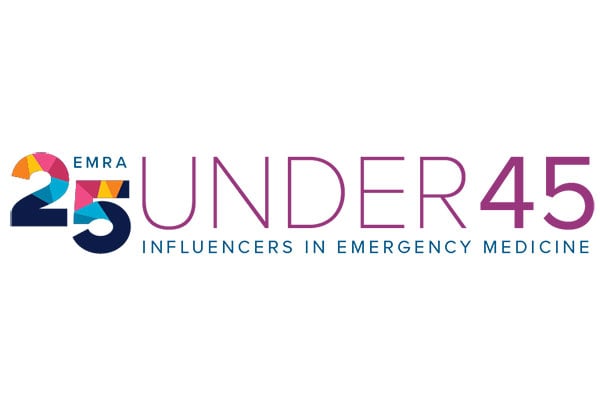New Mousetraps
Alexis Nelson, OMS II – Kansas City University College of Osteopathic Medicine
If you’ve ever seen ABC’s hit show Shark Tank, you know that the sharks love to invest in a “better mousetrap”
– a product or service that addresses some need more effectively than those that are currently available. If you
haven’t seen Shark Tank, take a break, whip up some popcorn, and check this task off your bucket list. Much
like the entrepreneurs who pitch their inventions to the sharks, researchers around the world are working to
create better mouse traps in their fields of interest. In the context of medicine, a “better mousetrap” is an
innovation that improves patient care. The purpose of this article is to spotlight two of these innovations – a
blood test for traumatic brain injury (TBI) and a mobile application that detects signs of cerebrovascular
accident (CVA).
By the time you’ve finished reading this sentence, it is likely that someone will have checked into an ED for
evaluation of a traumatic brain injury (TBI). In 2017, there were 1,128,300 TBI-related ED visits, which
equates to about one every 30 seconds [1]. Unfortunately, options for quick, accurate TBI assessment are
limited. In most cases, head computed tomography (CT) is the diagnostic modality of choice [2]. CTs are
undoubtedly informative, but they are also expensive, available in only certain settings, and not without risk.
Physicians often diagnose mild TBIs (or concussions) clinically based on relevant signs and symptoms [2].
While clinical diagnosis is a standard practice, even the most skilled clinicians are not immune to human error.
There is certainly room in the TBI toolbox for an efficient, accurate, cost-effective way to detect and begin to
evaluate TBIs, and such a tool may be on the way. In 2018 as part of its Breakthrough Device Program, the U.S.
FDA approved marketing of the first ever blood test for rapid evaluation of adults with TBI [3]. Banyan
Biomarkers® developed the test with the support of a multimillion-dollar grant from the U.S. Department of
Defense [4]. The Banyan Brain Trauma Indicator (BTI)™ measures blood levels of two biomarkers for
intracranial injury – Glial Fibrillary Acidic Protein (GFAP) and Ubiquitin C-terminal Hydrolase-L1 (UCH-L1)
[5]. GFAP is a cytoskeletal protein found in astroglia, and UCH-L1 is expressed in neuronal cell bodies and
plays a role in the ubiquitination pathway [6].
Results of the ALERT-TBI study, a multicentre trial which measured GFAP and UCH-L1 levels in 1,959
patients with suspected TBI and a Glasgow Coma Score (GCS) of 9-15, highlighted the effectiveness of using
biomarkers to diagnose TBIs [7]. Neuroimaging of all participants revealed 125 with identifiable intracranial
injury. Of these, 122 tested positive for significant GFAP and UCH-L1 elevation [7]. This speaks to the test’s
predictive ability, which may be useful when determining whether a patient requires further testing.
The study focused mainly on individuals with a GCS of 14-15. Of the 98% of participants that fit this criterion,
66% tested positive for elevated blood levels of GFAP and UCH-L1 [7]. Investigators contend that these results
highlight an opportunity to limit unnecessary imaging:
“If the GFAP and UCH-L1 test were used in patients with TBI in whom a head CT scan was felt to be clinically indicated,
those with a negative test (34–35% among all patients with TBI and those with GCS 14–15) would not undergo CT scan.
Thus, by imaging only those with a positive GFAP and UCH-L1 test, overall scanning could be reduced by about a third.”
– Bazarian et al. 2018
With these encouraging results in mind, you may be wondering just how close we are to getting our hands on
this test. The answer is, we are closer than you might expect. Armed with FDA approval, Banyan Biomarkers®
licensed their work to Abbott Laboratories. Abbott engineered the test to run on its i-STAT Alinity platform,
which is portable and efficient, offering results in as little as 15 minutes [8]. Best of all, in January Abbott
received FDA 501(k) clearance for its rapid, handheld device [9]. I suppose good things really do come to those
who wait!
That said, we are going to have to wait a bit longer for the next innovation that I will highlight – a mobile
application that assists patients and their family members with detecting the signs of a cerebrovascular accident
(CVA).
A small group of computer scientists, all of whom serve as faculty members at “Alexandru Ioan Cuza”
University, have developed a preliminary version of the app, which they have fittingly named “Stroke Help”
[10]. They modeled the app’s features after the “FAST” test. FAST is an acronym that reminds people what to
look for and when to seek help in cases of potential stroke [11]:
F: Facial Weakness?
A: Arm Weakness?
S: Speech Problems?
T: Time to Call 911!
“Stroke Help” allows users to conduct FAST tests on both themselves and their loved ones. The user experience
begins with system calibration and development of a profile that includes information about the user’s
demographics and medical history. After the initial set up, users can begin the test at any time. The in-app
assessment includes modules that assess facial asymmetry, upper extremity strength, finger dexterity, and
speech expression and quality [10]. Additionally, there is a post-assessment survey that covers other pertinent
symptoms like blurred vision, severe headache, and dizziness [10]. Finally, using 21 independent variables
related to the user’s medical history and current symptoms, the app calculates the probability that the user is
experiencing a stroke and provides risk-specific guidelines concerning appropriate next steps [10].
Though still in the development stage, “Stroke Help” offers us a glimpse at the opportunities to come as we
begin to exploit rapidly advancing technologies to improve patient care. Once complete, “Stroke Help” could
lead individuals who are experiencing symptoms consistent with a CVA to seek help more quickly than they
otherwise would have. When time is of the essence, as is the case with stroke management, this potential
product is something we should all be enthusiastic about.
As they continue to fine-tune the app’s features, the scientists behind “Stroke Help” are working toward a
commendable goal:
“We want to integrate the application in a hospital or state medical system pipeline to notify CVA clinics of
incoming patients together with the available data about said patients so that doctors can prepare in advance,
beds can be cleared, and medical imaging devices reserved, further optimizing the stroke treatment pipeline in
order to save more lives.”
-Simionescu et al. 2020
With that, I’d like to share a final thought. It is important to recognize that these tools are not perfect solutions.
In fact, they may not even be better mousetraps. Only time will tell. Nevertheless, it is rousing to think of just
how much technological and scientific advancement has and will continue to shape the practice of medicine.
Here’s to a bright future!
References:
- Statistical Brief #255. Healthcare Cost and Utilization Project (HCUP). March 2020. Agency for
Healthcare Research and Quality, Rockville, MD. https://www.hcup-
us.ahrq.gov/reports/statbriefs/sb255-Traumatic-Brain-Injury-Hospitalizations-ED-Visits-2017.jsp. - Shaikh F, Waseem M. Head Trauma. [Updated 2021 May 19]. In: StatPearls [Internet]. Treasure Island
(FL): StatPearls Publishing; 2021 Jan-. Available from:
https://www.ncbi.nlm.nih.gov/books/NBK430854/. - U.S. Food and Drug Administration. (2018 February 13). FDA authorizes marketing of first blood test to
aid in the evaluation of concussion in adults. [Press Release]. https://www.fda.gov/news-events/press-
announcements/fda-authorizes-marketing-first-blood-test-aid-evaluation-concussion-adults. - “Banyan Biomarkers, Inc. Awarded $26.3 Million Department of Defense Contract for Diagnostic Test
for Traumatic Brain Injury.” Fierce Biotech, 6 Oct. 2010, www.fiercebiotech.com/biotech/banyan-
biomarkers-inc-awarded-26-3-million-department-of-defense-contract-for-diagnostic. - “Banyan BTI TM .” Banyan Biomarkers®. https://www.banyanbio.com/banyan-bti.html.
- Papa et al. Time Course and Diagnostic Accuracy of Glial and Neuronal Blood Biomarkers GFAP and
UCH-L1 in a Large Cohort of Trauma Patients with and Without Mild Traumatic Brain Injury. JAMA
Neurol. 2016 May 1;73(5):551-60. doi: 10.1001/jamaneurol.2016.0039. PMID: 27018834. - Bazarian et al. Serum GFAP and UCH-L1 for prediction of absence of intracranial injuries on head CT
(ALERT-TBI): a multicentre observational study. Lancet Neurol. 2018 Sep;17(9):782-789. doi:
10.1016/S1474-4422(18)30231-X. Epub 2018 Jul 24. PMID: 30054151. - Abbott. “Overcoming Challenges in the Evaluation of Suspected Mild Traumatic Brain Injury.” Abbott
Point of Care. https://www.pointofcare.abbott/us/en/overcoming-challenges-evaluation-mild-traumatic-
brain-injury#testbiomarkers. - Abbott. (2021 January 11) Abbott receives FDA 510(k) clearance for the first rapid handheld blood test
for concussions. [Press Release]. https://abbott.mediaroom.com/2021-01-11-Abbott-Receives-FDA-510-
k-Clearance-for-the-First-Rapid-Handheld-Blood-Test-for-Concussions. - Simionescu et al. Prehospital Cerebrovascular Accident Detection using Artificial Intelligence Powered
Mobile Devices. Procedia Computer Science 176 (2020): 2773-2782. - Stroke Association. “Symptoms of Stroke.” https://www.stroke.org.uk/what-is-stroke/what-are-the-
symptoms-of-stroke.
Related Content

Aug 25, 2017
Your Home
The Emergency Medicine Residents' Association EMRA is the voice of emergency medicine physicians-in-training and the future of our specialty and the largest and oldest independent resident organization in the world. EMRA was founded in 1974 and today has a membership over 18,000 residents, medical students, and alumni.





